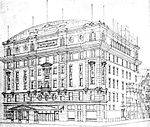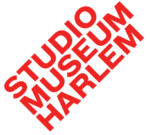Hotel Theresa

The Hotel Theresa is located at 2082-96 Adam Clayton Powell Jr. Boulevard between West 124th and 125th Streets in the Harlem neighborhood of Manhattan, New York City. In the mid-20th century, it was a vibrant center of African American life in the area and the city. The 13-story hotel was built in 1912–13 by German-born stockbroker Gustavus Sidenberg (1843–1915), whose wife the hotel is named after, and was designed by the firm of George & Edward Blum, who specialized in designing apartment buildings. The hotel, which was known in its heyday as "the Waldorf of Harlem", exemplifies the Blums' inventive use of terracotta for ornamentation, and has been called "one of the most visually striking structures in northern Manhattan".The building, now an office building known as Theresa Towers, was designated a New York City landmark in 1993 and was added to the National Register of Historic Places in 2005.
Excerpt from the Wikipedia article Hotel Theresa (License: CC BY-SA 3.0, Authors, Images).Hotel Theresa
West 124th Street, New York Manhattan
Geographical coordinates (GPS) Address Nearby Places Show on map
Geographical coordinates (GPS)
| Latitude | Longitude |
|---|---|
| N 40.808611111111 ° | E -73.949444444444 ° |
Address
West 124th Street 205
10027 New York, Manhattan
New York, United States
Open on Google Maps







